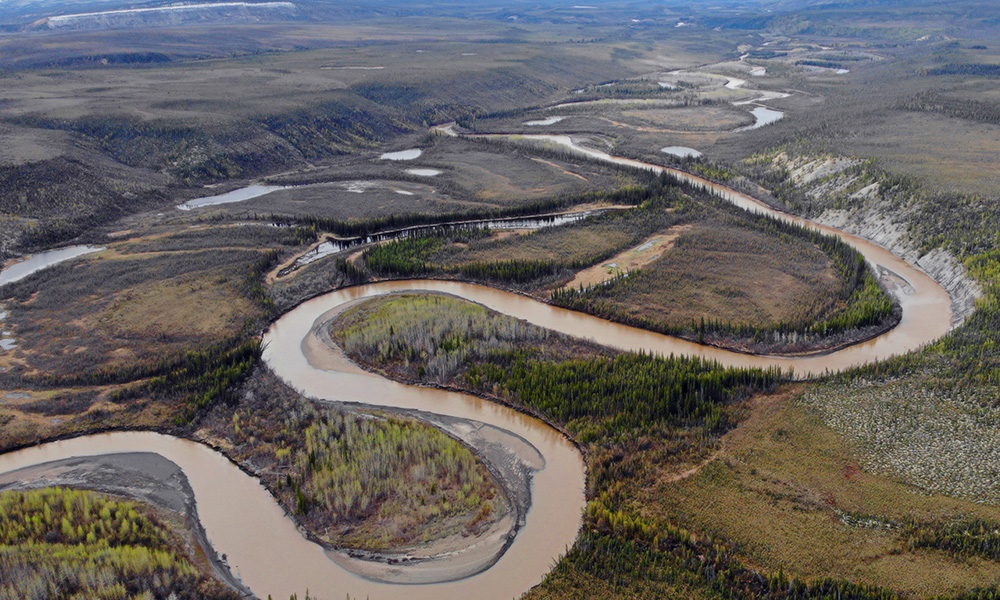
A team of international researchers monitoring the impact of climate change on large rivers in Arctic Canada and Alaska determined that, as the region is sharply warming up, its rivers are not moving as scientists have expected.
Dr. Alessandro Ielpi, an Assistant Professor with UBC Okanagan’s Irving K. Barber Faculty of Science, is a landscape scientist and lead author of a paper published this week in Nature Climate Change. The research, conducted with Dr. Mathieu Lapôtre at Stanford University, along with Dr. Alvise Finotello at the University of Padua in Italy, and Université Laval’s Dr. Pascale Roy-Léveillée, examines how atmospheric warming is affecting Arctic rivers flowing through permafrost terrain.
Their findings, says Dr. Ielpi, were a bit surprising. “The western Arctic is one of the areas in the world experiencing the sharpest atmospheric warming due to climate change,” he says. “Many northern scientists predicted the rivers would be destabilized by atmospheric warming. The understanding was that as permafrost thaws, riverbanks are weakened, and therefore northern rivers are less stable and expected to shift their channel positions at a faster pace.”
To test this assumption, Dr. Ielpi and his team analyzed a collection of time-lapsed satellite images—stretching back more than 50 years. They compared more than a thousand kilometres of riverbanks from 10 Arctic rivers in Alaska, the Yukon and Northwest Territories, including major watercourses like the Mackenzie, Porcupine, Slave, Stewart and Yukon.
“We tested the hypothesis that large sinuous rivers in permafrost terrain are moving faster under a warming climate and we found exactly the opposite,” he says. “Yes, permafrost is degrading, but the influence of other environmental changes, such as greening of the Arctic, counteracts its effects. Higher temperatures and more moisture in the Arctic mean the region is greening up. Shrubs are expanding, growing thicker and taller on areas that were previously only sparsely vegetated.”
This growing and robust vegetation along the riverbanks means the banks have become more stable.
Dr. Ielpi points out that monitoring riverbank erosion and channel migration around the globe is an important tool that should be widely used to understand climate change. As part of this research, a dataset of rivers found in non-permafrost regions and representative of warmer climates in the Americas, Africa and Oceania was also analyzed. Those rivers migrated at rates consistent with what was reported in previous studies, unlike those in the Arctic.
“Scientific thinking often evolves through incremental discoveries, although great value lies in disruptive ideas that force us to look at an old problem with new eyes,” states Dr. Ielpi. “We sincerely hope our study will encourage landscape and climate scientists elsewhere to re-evaluate other core assumptions that, upon testing, may reveal fascinating and exciting facets of our ever-changing planet.”
Please visit the UBC Okanagan News site to read the full story.
Through Strategy 9: Knowledge Exchange, UBC is committed to improving the ecosystem at the university and beyond that supports the translation of research into action.